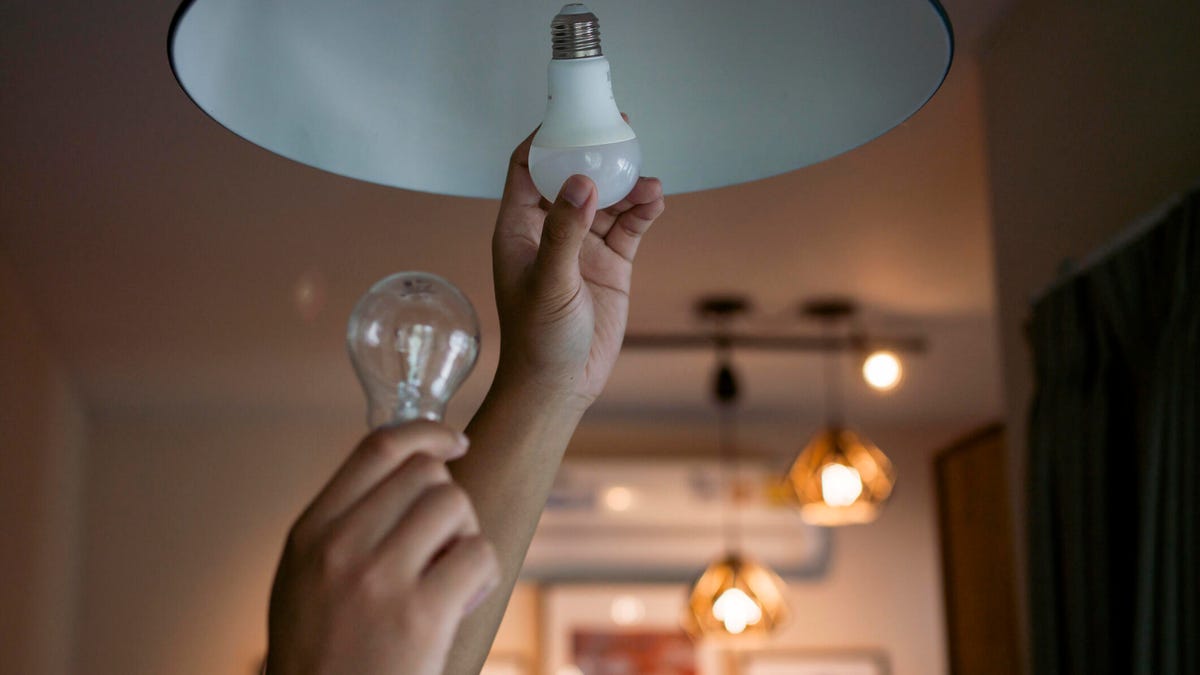Still have doubts about whether LED lightbulbs are actually worth it? Consider this.
In 2015, when just 6.7% of residential light installations had LED bulbs, the average light installation required 38 watts of electricity. Five years later, in 2020, 48% of residential light installations had LED bulbs. The average wattage had fallen nearly by half, to less than 22 watts, according to a new government report.
A 16-watt difference doesn’t seem like much when you consider the average American paid just 15 cents for a thousand watt-hours in 2022. But multiply that by the dozens of lights you have in your home (I counted 22 in mine, and I like to sit in the dark) and it starts to add up to real savings.
It’s already becoming harder to find new incandescent bulbs. The Department of Energy implemented new efficiency standards in 2023, effectively ruling out the sale of the least efficient bulbs. And new standards from the DOE will require lightbulbs to be even more efficient in the future.
With rising energy costs, we’re all looking to save money by using less electricity. LED bulbs have shown they can turn lighting costs from significant to virtually negligible.
The rise of LED bulbs
The new government report, the 2020 US Lighting Market Characterization by the Department of Energy’s Office of Energy Efficiency and Renewable Energy, has a wide collection of stats on energy consumption and the breakdown of lighting installations. It shows the rapid growth of LED bulbs in the past decade and how it’s had a significant effect on how much energy we use to light our homes.
In 2015, the biggest share of residential lighting units went to incandescent bulbs, at 34.6%. Those had dominated the lighting industry since they displaced candles and oil lamps, but in 2015 they had given a lot of ground to compact fluorescent lights, the spiral-looking things that are more efficient than incandescent bulbs (but less efficient than LEDs). In 2015, CFLs accounted for 33.2% of lights. LEDs made up only 6.7% of lights.
Things had changed by 2020. LEDs had become dominant, at 47.6%. While compact fluorescents held on to a lot of their share, at about 24%, the era of incandescent bulbs was burning out fast, with just 12.6%.
The reason why? LED bulbs are just more energy efficient. And not by a little — by a lot.
How much more efficient are LED bulbs?
When shopping for lightbulbs, the big number you see on the front of the box (maybe it’s 40 watts or 60 watts, or so) isn’t the actual wattage of the bulb itself. Look closely, and you’ll see it actually says something like “40W replacement… 6.5W LED.” What this means is that while it produces the amount of light you’d expect from a 40-watt incandescent bulb, it’s actually using about 16% of the energy that an incandescent bulb would use to light your home.
The DOE report shows the average residential LED bulb consumed just 8.5 watts compared with 56.1 watts for the average residential incandescent bulb and 15.2 watts for the average residential compact fluorescent bulb in 2020. The LEDs offer the same amount of lighting, but at far less power consumption.
There were four times as many LED bulbs as incandescent bulbs in American homes in 2020. Yet incandescent bulbs consumed nearly 50% more electricity — 21 terawatt-hours compared with LEDs’ 14.7 terawatt-hours.
What to think about when shopping for LED lightbulbs
LED bulbs are a bit different from incandescent bulbs, so you’ll need to look for different things. For example:
Pay attention to the lumens: The lumens on a bulb indicate how bright it’ll be. If you need a brighter bulb, go for higher lumens.
Consider the color: LED bulbs that come in “daylight” can be exceedingly bright, but they’re also exceedingly common on store shelves. If you want a softer light, keep an eye out for “soft white” or other colors.
Not all LED bulbs are dimmable: You’ll need to pay close attention to the bulb you buy if you’re putting it in a dimmable fixture. Not all LEDs can be dimmed, so read the box carefully.
Other ways to save on energy
Switching to LED lightbulbs is a great way to cut your energy use from lighting dramatically, but lighting is just one part of your home’s energy system, and it’s not a big one.
The biggest way to save on energy is to address your home’s heating and cooling. That could be a big project, like improving insulation or switching to a heat pump. But it could also mean being conscientious about what temperature you set your thermostat to. And if you really hate receiving a giant power bill, you could consider installing solar panels, which carry significant incentives to make them more affordable.


